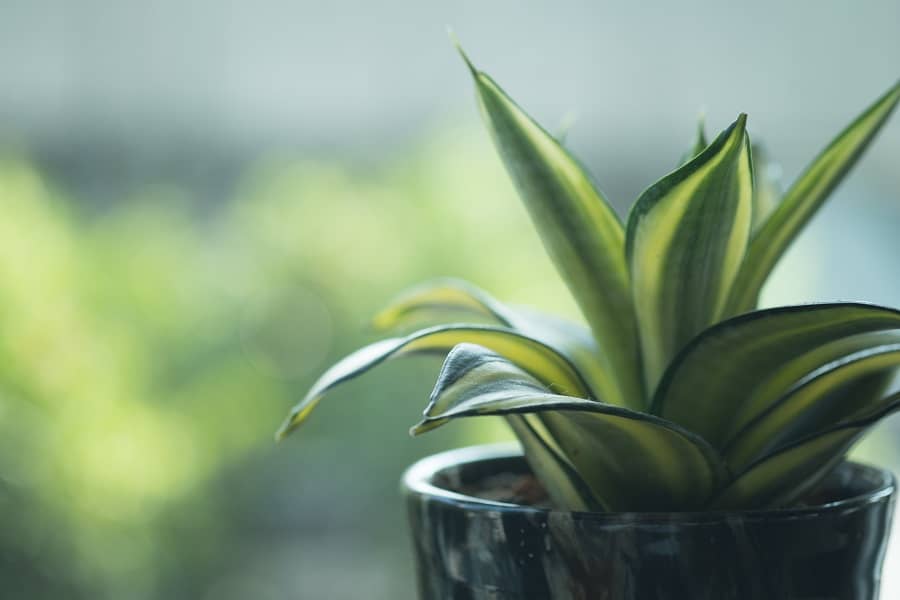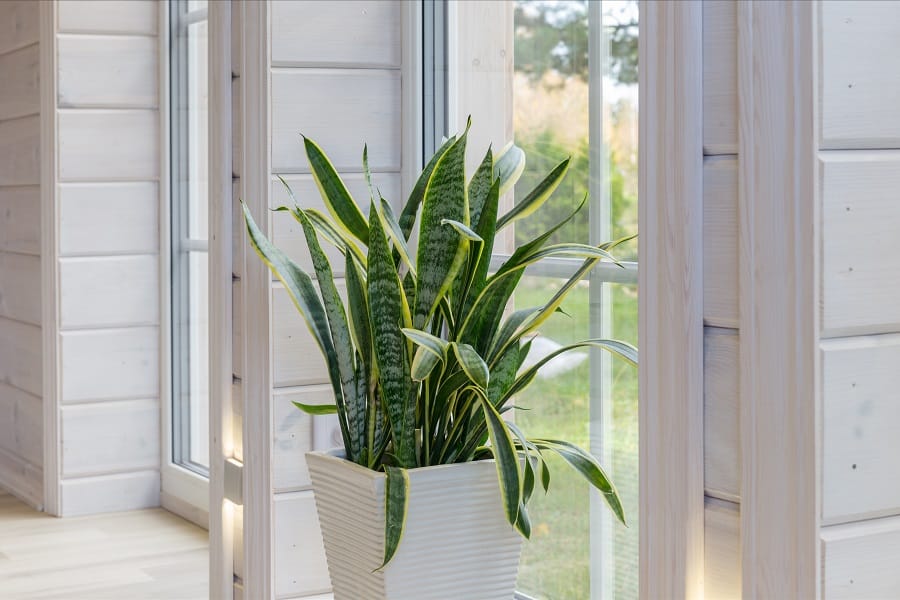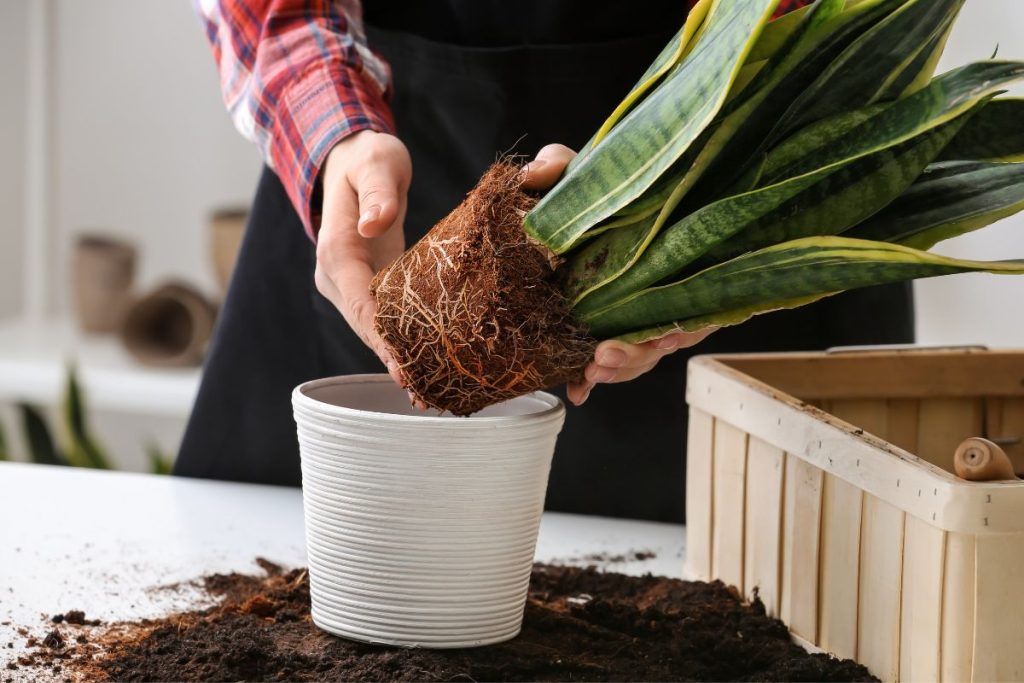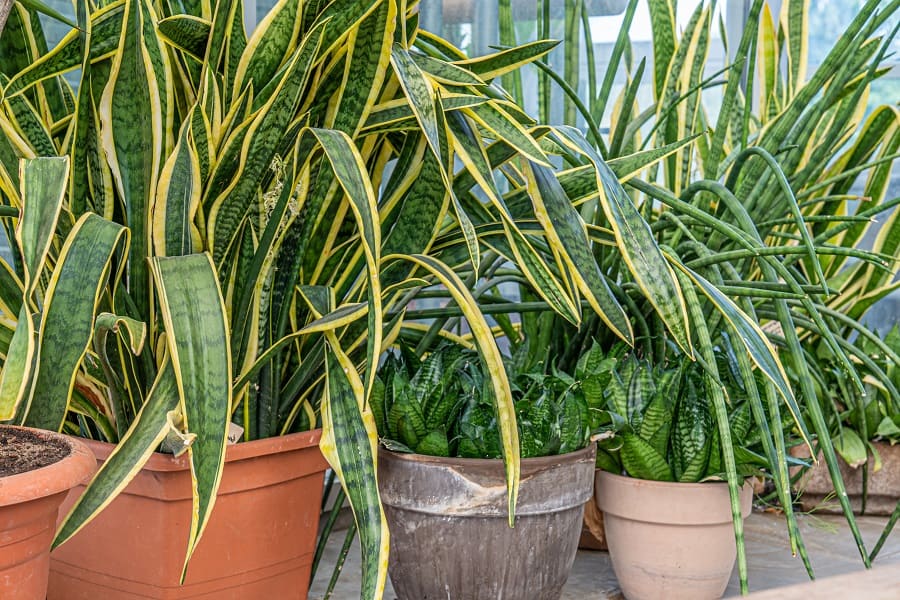How to Revive a Drooping Snake Plant
The striking snake plant, with its tall, sword-like leaves, is renowned for being one of the hardiest indoor plants around. However, even these resilient beauties can sometimes start to droop, indicating that something is amiss. Fear not, plant lovers – this comprehensive guide will delve into the potential causes behind those drooping snake plant leaves and provide simple, effective solutions to revive your verdant friend’s vibrant appearance. From watering woes to environmental stressors, we’ve got you covered with expert tips to get your snake plant standing tall once again.

Why Is My Snake Plant Droopy?
Like any plant, snake plants can get droopy for several reasons. Let’s investigate the most common culprits:
1. Too Dry or Too Wet?
Snake plants don’t like extreme moisture levels. If the soil is bone dry for too long, those leaves will start drooping from thirst. But soggy soil can cause rot and drooping too! Finding the right watering balance is key.
2. Bad Drainage
Along with overwatering, poor drainage can leave your plant’s roots sitting in too much moisture. Snake plants need that water to drain away to prevent rot.
3. Too Cramped
As snake plants grow, their roots can eventually get all tangled up in a too-small pot. This rootbound situation stresses the plant out and makes the leaves droop.

4. Not Enough Sunlight
These plants need some bright, indirect light to truly thrive. If your snake plant is stuck in a dim corner, it might start drooping from lack of energy.

5. Temperature Troubles
Snake plants are used to warm conditions and can get droopy if it’s too cold for their liking. Chilly drafts or frosty windowsills are no-nos.
6. Pests and Diseases
Unfortunately, pesky bugs like fungus gnats can snack on your plant’s roots and leaves, making it droop and struggle. Some diseases can have the same effect too.

Don’t Worry, We’ve Got Solutions
Now that you know the potential causes, let’s get your plant standing tall again! Here are some easy fixes based on the issue:
Watering Woes
- If it’s too dry, give your plant a good soak and let the excess drain away. Then wait until the top few inches of soil are dried out before watering again.
- If it’s too wet, stop watering for a while and make sure the pot has proper drainage holes.
Drainage Dilemmas
Switch to a well-draining potting mix made for cacti and succulents. Or mix in some perlite or coarse sand to improve airflow in the soil.
Rootbound Runners
Time for a little houseplant spa day! Gently remove the root ball and unsnarl any circling roots before repotting in a roomier container.
Light Levels
Gradually move your plant to a spot with bright, indirect light like a few feet from an east or west-facing window. Filtered sun is perfect.
Temperature Tactics
Keep your snake plant away from cold drafts, heating vents, and frosty windowsills. These tropicals thrive in warm, moderate indoor temps.
Pest Patrol
Check under leaves and in the soil for any signs of critters. An insecticidal soap spray can help with mild infestations while more stubborn pests may need stronger treatment.
With a little TLC and the right environment, those droopy leaves should soon spring back to life! Just be patient and keep that green thumb working.
FAQ’s
Why is my snake plant drooping after repotting?
Repotting can be stressful for plants! Your snake plant is likely just experiencing some temporary transplant shock. Give it a few weeks in bright, indirect light while being careful not to over or underwater. The roots need time to get re-established before it perks back up.
Will a droopy snake plant recover?
In most cases, yes! As long as you correct the underlying issue, droopy snake plant leaves should be able to revive with the right care. However, if leaves are extremely damaged or rotten, they may not bounce back. You can snip off any unsalvageable leaves and allow the plant to focus on growing new, healthy foliage.
Should I cut drooping snake plant leaves?
It’s best to leave droopy leaves alone until new growth appears, unless they are severely damaged or rotten. Cutting too many leaves at once can really set the plant back. Let it conserve energy by holding onto those wilting leaves until fresh, upright ones emerge to replace them.
The Bottom Line
A droopy snake plant doesn’t have to stay that way! By pinpointing the cause and providing proper care, you can revive those architectural leaves. With patience and some simple adjustments, your plant will be standing tall again before you know it. Just stick with it!
